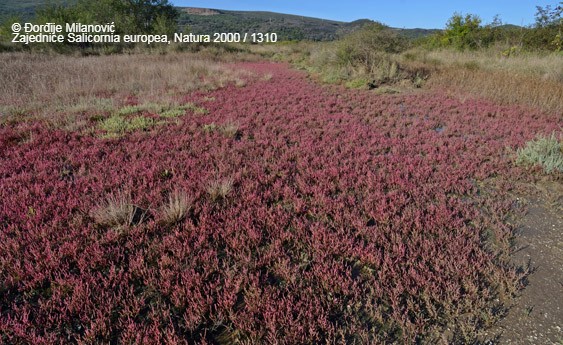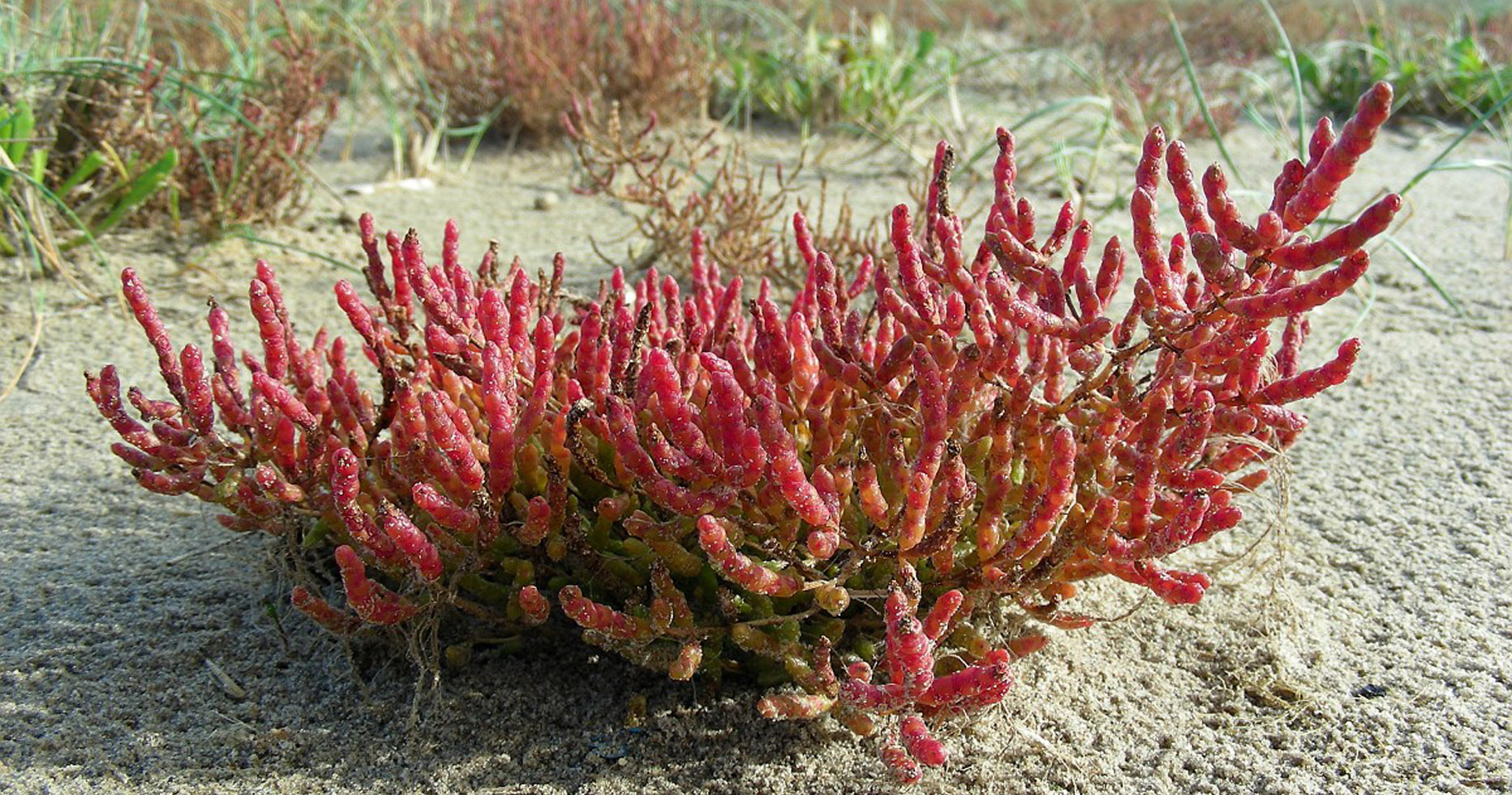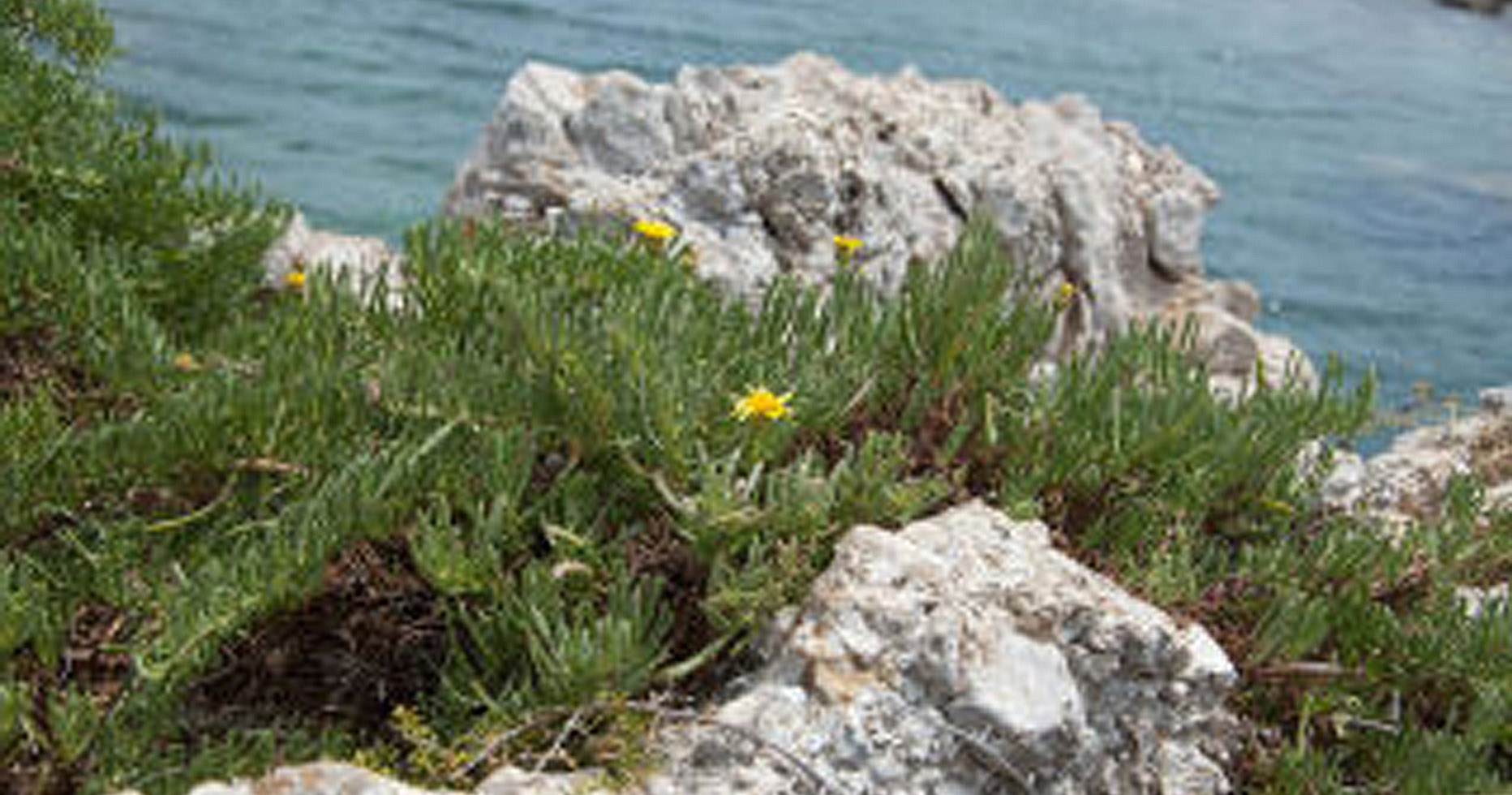1310 Vegetation of glassworts (Salicornia sp.) and other annual plants on mud and sand

PAL.CLAS.: 15.1, 15.11, 15.113, 15.1131, 15.1133, 15.12
EUNIS 2007: A2.5, A2.551, A2.552
Vegetation is made up dominantly of annual plants, comprised of the Salicornia genus representatives, inhabits sandy coasts and periodically flooded muddy coasts. Due to extreme ecologic conditions that rule the habitat, the community is floristically very poor and usually made up of an aggregate species Salicornia europaea.
Included types: Salicornietum europeaeae and Salsoletum sodae
Indicator species: Salicornia europaea aggr., Salsola soda, Sueda maritima, Parapholis incurve, Spregularia marina, Hordeum murinum.
Starting from the coast itself, the vegetation of glassworts and other annual plants on mud and sand is indispensable. Soils that are characterised by a high content of salts are unfavourable for the development of most plant species. Hence, they are inhabited only by those adapted to such extreme conditions. Such species, known as halophytes, make floristically poor but very interesting plant covers. This community can especially be noticed in autumnal moths when glasswort gets a bright red colour and gives a special aspect to the community. For typical halophytes, the constitution of the succulents is characteristic meaning they have an ability to keep bigger amount of water and mineral matters in their stems and leaves. They are called “salt collectors” for their ability to concentrate bigger amounts of salt in their tissues, which characterises having higher osmotic pressure of cell juice. On the leaf surface in many halophytes, there are salt secreting glands. Salt glands secrete salt in a solution, the liquid evaporates and, on the surface of the leaves, there remain the salt crystals that are washed away by the rain or carried away by the wind afterwards. Some halophytes fight by collecting a larger amount of water in the cell juice. Succulence is a plant’s ability to store water in its augmented leaves, stem or root. In succulence, all cells augment, leaves become bigger but their overall number is decreasing. In halophytes of Atriplex and Sueda genera, the succulence is found in leaves; and in Salicornia and Arthrocnemum genera, it is found in the branches. Some plants get rid of their salts by rejecting their parts with accumulated salt. Plants usually reject their older leaves, where certain salts are accumulated, while younger leaves, that can accumulate salt, replace the older, rejected ones. Thus, the plant gets rid of the excess salt. This mechanism is usually applied by species such as Aster tripolium and Plantago maritima. The most common types in this habitat are: Salicornietum europeaeae and Salsoletum sodae. Some of the interesting representatives are:

© Ed Stikvoort
Annual glasswort – Salicornia europea
Annual glasswort (Salicornia europaea) is a bluish-green plant with stunted leaves, so, the stem performs the process of photosynthesis. It is spread along the coasts and salty soils. Glasswort is rich in salts, and its bitter taste comes from a high proportion of magnesium salts.

Golden samphire – Inula chritmoides
Golden samphire (Inula chritmoides) inhabits rocky and sandy coasts, and salty marshes. It tolerates large amounts of salt in the air, water and soil. The stems are woody at the base and bare while the leaves are fleshy. All species of the Inula genus contain inulin and essential oils that help in treatment of many diseases.
